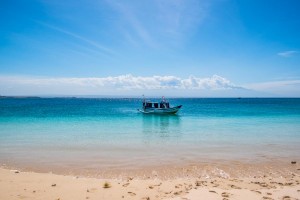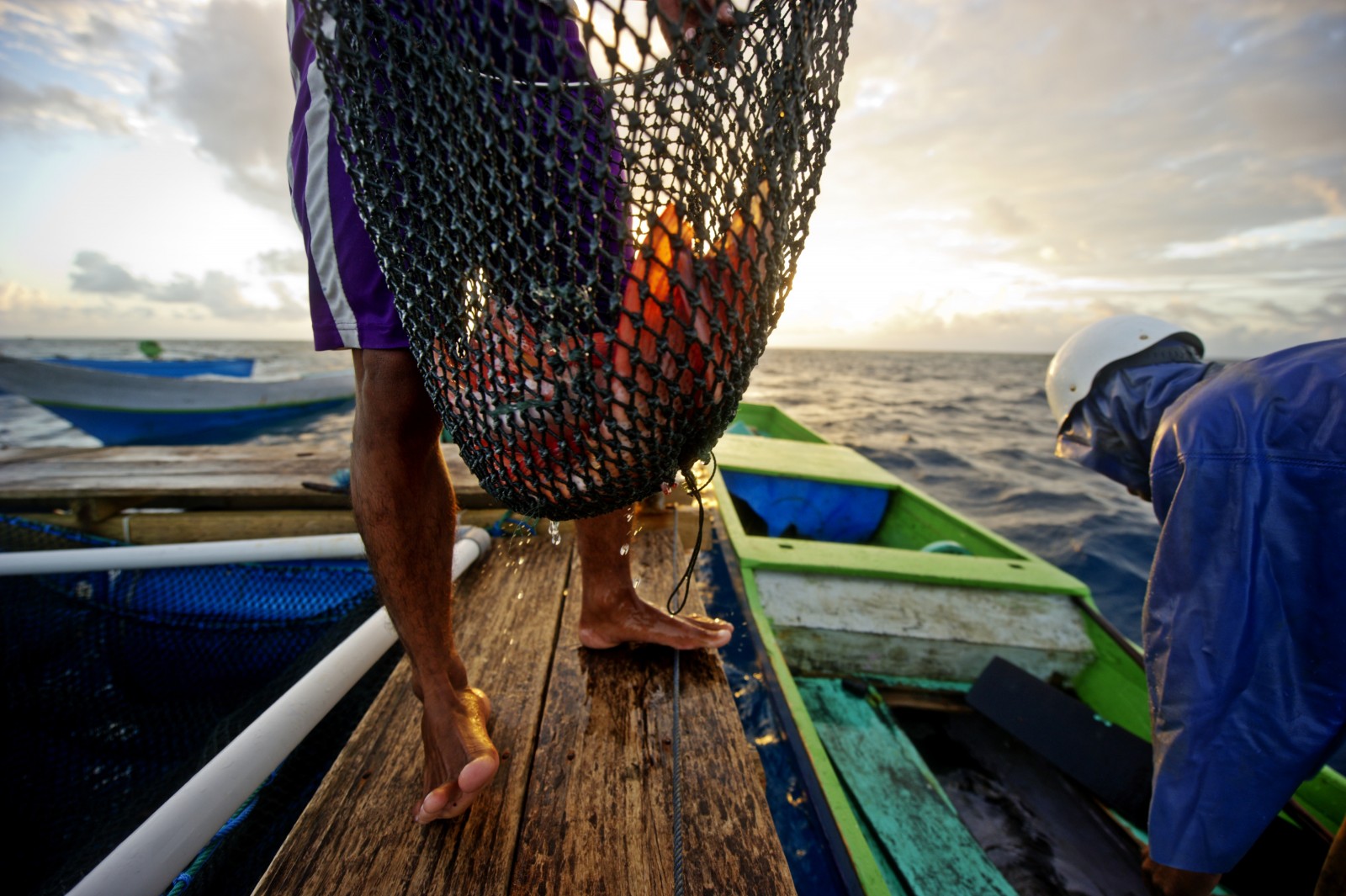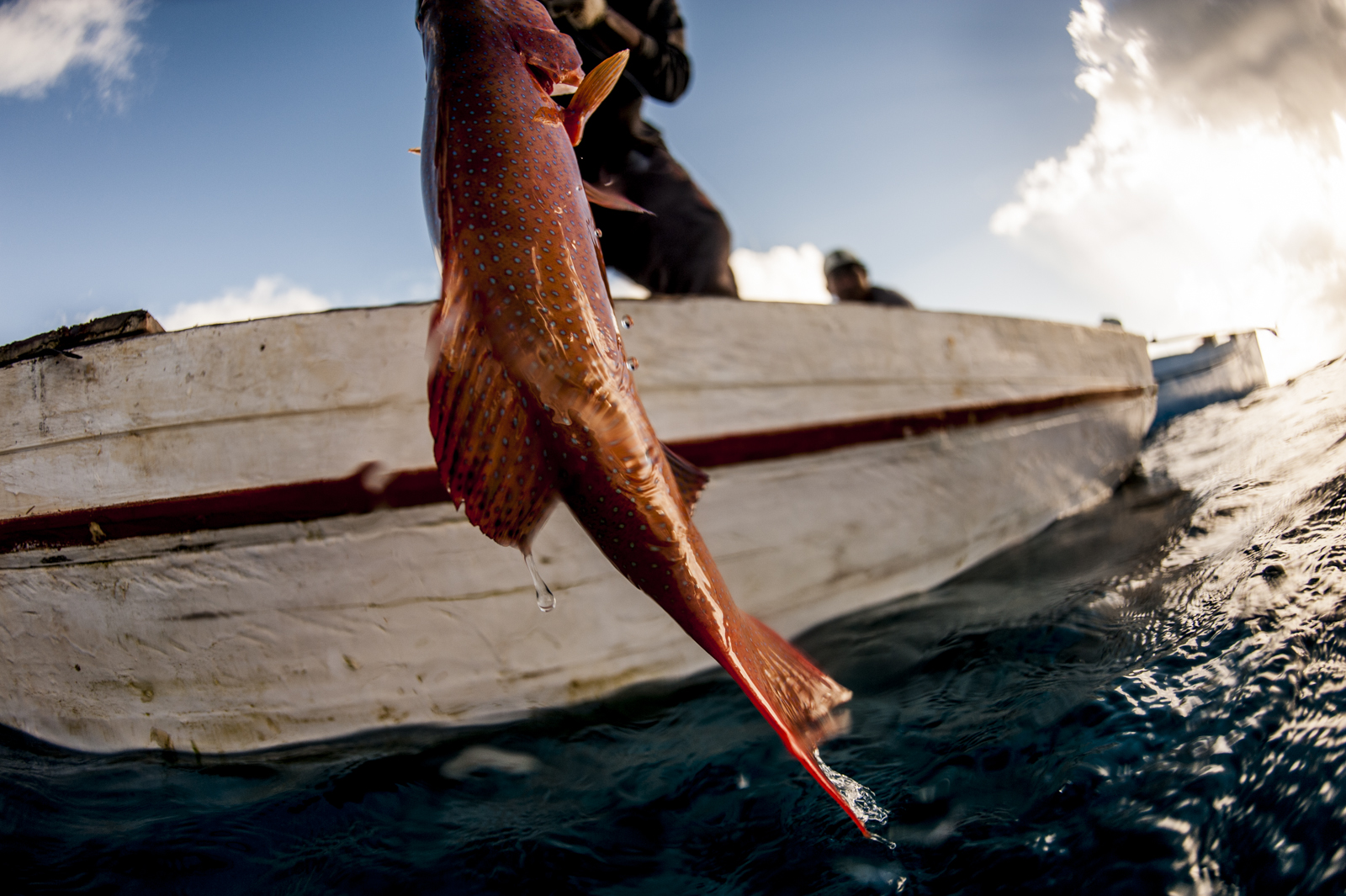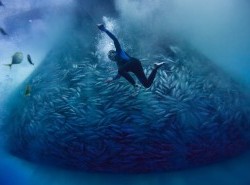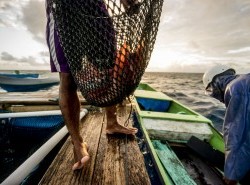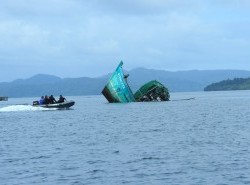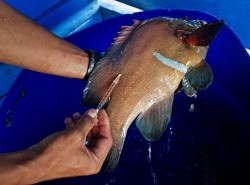Minister Susi Pudjiastuti has had a dramatic impact on Indonesia's fisheries - including a 90% drop in foreign fishing vessels operating illegally there. But there's more to be done.
President Jokowi’s political pragmatism and strength of vision were in evidence when he appointed dynamic and unconventional entrepreneur Susi Pudjiastuti as Minister of Maritime Affairs & Fisheries (MMAF) instead of a political appointee. Minister Pudjiastuti’s brash style and straight talk has endeared her to the nation at large, and she has become a hero to many, while at times her controversial policies have brought the administration strong political blowback.
Early in her tenure, Minister Pudjiastuti embraced the idea that Indonesia, the world’s most important tuna producer and second-largest wild-capture fish producer, was losing billions of dollars from Illegal, Unreported, and Unregulated fishing (IUU). One study estimated losses at roughly USD 4 billion a year, while senior government officials put the number closer to USD 20 billion per year.
The government responded by establishing the National IUU Task Force, and Minister Pudjiastuti initiated a further series of policies to combat IUU fishing. Her decision to blow up foreign vessels caught operating illegally in Indonesian waters has not only deterred potential violators but also raised the issue of IUU internationally and positioned her and President Jokowi as strong leaders in the region. A moratorium on foreign-owned and -built boats and a prohibition on transshipments have perhaps had even greater impact, reducing foreign fishing boats in Indonesian waters by 90 percent. However, the moratoria on foreign boats and transshipments have been met with stiff political opposition, particularly from industry groups who claim, with some justification, that these policies have handicapped the fishing industry and eliminated jobs.
A distinct but overlapping issue surrounding IUU is that of human rights violations in the fisheries industry. The International Organization for Migration, in collaboration with MMAF, began working in Indonesia with victims of human trafficking that were freed following MMAF’s moratorium on foreign owned and built vessels. This work resulted in a report issued in 2016, cosigned by Minister Pudjiastuti. Several high-profile news outlets further elevated the issue in 2015 and 2016.
Indonesia reacted quickly to the increased scrutiny, first ratifying the International Labour Organization’s 2006 Maritime Labour Convention by a unanimous vote of the House of Representatives in September of 2016. Soon thereafter, the MMAF issued Ministerial Decree No. 2/2017 which created the basis for human rights certification in the fisheries industry. This decree was further followed by the Ministry’s procurement of life insurance policies for hundreds of thousands of fishers.
The most controversial of Minister Pudjiastuti’s policies, however, may have been a ban on trawling. The policy has led to frequent protests and leaders of major Islamic organizations, congressional groups, human rights commissions, and political parties have taken up the mantle of aggrieved local fishers and voiced their opposition. Some political observers have suggested, however, that the pushback represents larger political and business interests, while smaller scale local fishers have benefited from the policy. Regardless, the political pressure has yielded results, and an exemption to the trawl ban has been provided for fishers from the north coast of Java, pending government efforts to provide alternative fishing gear.
The establishment of a new Coordinating Ministry for Maritime Affairs (CMMA) tasked with aligning all maritime related ministries reflects President Jokowi’s strategic prioritization of maritime issues and leadership. However, overlapping mandates and increased visibility of marine-related issues have created political challenges that have, in part, led to turnover in CMMA leadership. The current appointee, the ministry’s third, is Jokowi confidant and former general Luhut Binsar Pandjaitan. While Minister Pandjaitan has brought stability to the CMMA, President Jokowi has still felt the need to intervene directly into MMAF policy making, most recently on the controversial trawl ban.
Despite the political and economic ramifications, evidence is mounting that these policies are having positive impacts. One study estimates that the 90 percent reduction in foreign fishing boats in Indonesia has translated into a 25-35 percent reduction in total fishing effort, and many, including Minister Pudjiastuti, have cited significant increases in catch in recent years. However, authoritative data are scarce and the actual state of fisheries remains unclear.
Minister Pudjiastuti now hopes to capitalize on the budding success of these policies and drive economic returns by investing in industry and infrastructure. The government plans to develop 12 integrated maritime and fisheries centers (SKPT), providing fishing boats and gear; storage and cold chain infrastructure; and floating docks and other facilities. Minister Pudjiastuti has stated that the program is a concrete realization of President Jokowi’s vision to “develop Indonesia starting from its peripheries by strengthening villages and areas within the framework of the Unitary State of the Republic of Indonesia.” More than 10 percent of MMAF’s expenditures in 2016 was allocated to “goods for communities/regional government” further illustrating the government’s focus on capital expenditures and support to local communities and governments.
What remains missing, however from the government’s laudable efforts, is the recognition that even legal fishing can deplete fish resources if unmanaged and there are few national programs to coherently and effectively manage the many disparate fisheries across the archipelago. While cursory attention has been paid to fishery management, namely through the drafting of an architecture to underpin the nation’s fishery management areas (Wilayah Pengelolaan Perikanan (WPP)), there has been little sign of earnest intention to invest in, or grapple with, the complexities of effective fisheries management. The top-down structure of the current ministry-led fisheries management, through Indonesia’s 11 WPPs, does not adequately address the need to engage stakeholders across sectors in evidence-based, adaptive management at appropriate geographic scales. It also fails to recognize provincial authority over the area 0-12 nautical miles from shore, enshrined in Law 23 of 2014.
The MMAF’s 2015-2019 strategic plan highlights sustainability, sovereignty, and prosperity as its three major pillars. However, the highest-level strategic objectives pertain to growth, rather than the more nuanced set of metrics that would be required to balance growth and sustainability. Decisions to invest in new fleets, gear, and export centers do not take into account the need to also rationalize existing processing capacity in line with measures of maximum sustainable yield (MSY), and so risk locking in a strong structural driver to overfish.
The primacy of economic development is, of course, warranted and expected, particularly in a middle-income country context. However, without a more rigorous approach to management, including a reorientation of government agencies and staff towards sustainability rather than revenue maximization, gains are likely to be short term in nature. Despite the important victory of the campaign against IUU fishing by foreign boats, Indonesia’s existing fisheries management regime has so far shown only limited success in halting destructive fishing practices (including trawling) and limiting fishing effort fueled by the expanding financial resources and capacity devoted to lucrative wild capture fisheries.
Aquaculture is also a central area of concern. Indonesia is currently the second largest aquaculture producer in the world, having quadrupled production between 2000 and 2015. Aquaculture is now a larger job creator than wild capture fisheries and is expected to surpass wild capture fisheries in terms of production before 2030. Growth in aquaculture is critical to meeting national goals for the development of local livelihoods and food security. However, further growth will require addressing financial, logistical, and capacity challenges, such as those associated with poor transportation infrastructure, variability in seed quality, and substandard practices. Moreover, there appears to be no comprehensive approach to aligning production growth targets for aquaculture with approaches to managing the environmental impacts of such growth, including those surrounding land use, carbon emissions, feedstocks, and freshwater use. Increased and urgent attention from regulators will be required to drive the required changes from current practices and approaches.
